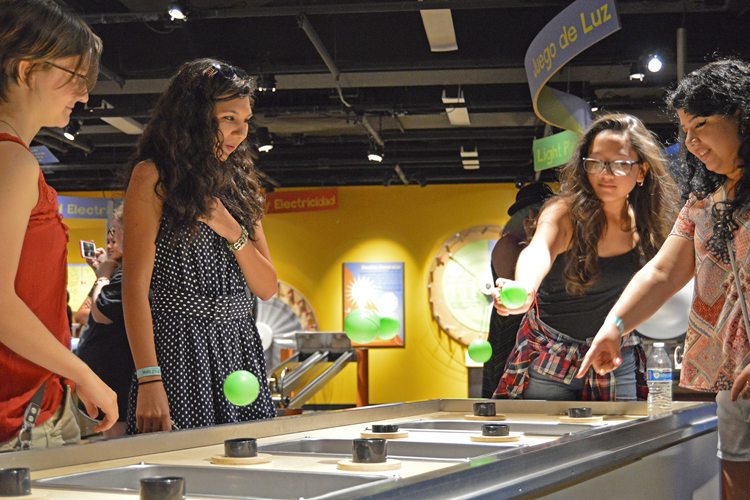Arizona Science Center, along with The Franklin Institute and the California Science Center, released the results from their national research study, which found that visits to science centers were the only type of science learning experience that consistently inspired both youth and adult interest in science. The Multi-Institutional Science Center Effects Study (MISCES), conducted by the Institute for Learning Innovation, sampled more than 4,500 youth and adults from the Phoenix, Philadelphia, and Los Angeles metropolitan areas to better understand the settings and resources that inform how youth and adults engage with science.
“The MISCES study shows us how science and technology centers can play a critical role in creating a STEM literate society,” said Chevy Humphrey, chief executive officer of Arizona Science Center. “While schools are one important part of the equation of how students learn science, science centers can provide the rest of that solution, equipping students, parents, and teachers with the opportunities to bring science to life.”
MISCES built on decades of previous research, assessing how visits to science centers compare with other types of learning experiences that include: attending in-school science classes, using the Internet for science, watching science-focused television shows, and reading science-related books and magazines. The research team found that out-of-school, free-choice learning experiences are critically important in the development of youth and adult interest in science. Science centers are best positioned to offer these experiences in hands-on, interactive settings, enabling all learners to explore topics that are of greatest interest to them.
“This study is an expansion of research work, conducted over the last 20 years in collaboration with Dr. John Falk, investigating the California Science Center’s impact on communities in the Los Angeles area,” indicated Jeffrey Rudolph, president and CEO of the California Science Center. “Including additional partner sites for the current study enables us to generalize research findings to the entire field.”
This study offers a path forward to widespread public science literacy, emphasizing the need to expand beyond a focus on in-school science education to include out-of-school learning experiences, which together can inform a strong, sustained interest in science.
“Out-of-school, free-choice learning opportunities are indispensable when it comes to sparking the curiosity of adults and children alike,” said Larry Dubinski, president and CEO of The Franklin Institute. “With STEM driving our culture and economy forward, the MISCES study stands as yet more evidence of what so many of us know to be true—science centers are crucial to creating citizens that are well-versed in science and technology topics and ready to tackle the challenges of the twenty-first century.”
Arizona Science Center, The Franklin Institute, and the California Science Center are following that path, developing a holistic approach that ensures youth and adults across the country have both the formal and informal opportunities to explore and engage with science.
“Our businesses, schools, and policymakers are striving to increase interest and skills in science among all Americans,” said John Falk, the executive director of the Institute for Learning Innovation and the lead author of the study. “It is essential that we give greater attention to science centers and the informal, free-choice learning opportunities that they uniquely offer.”
The MISCES Study was supported in part by funding from the Noyce Foundation and the National Science Foundation.




